Instruction
The Ultimate Putting Program (Part 5): The Pre-Shot Routine
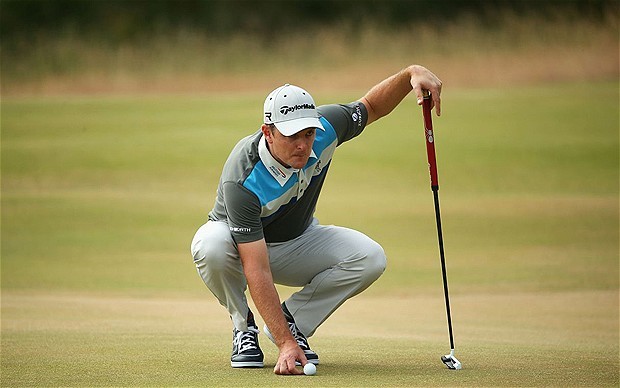
The essence of putting is the ability to roll your ball on your intended line as far as the hole, which we have discussed in previous articles. There is one last variable to putting that I believe is most important. At the end of the day, golfers are only as strong as their pre-shot routine. I imagine that close to 100 percent of golfers are seeking to become more consistent this year. The pre-shot routine is a sure way of developing the skills necessary to be more consistent under a variety of circumstances.
You may be familiar with a pre-shot routine that includes a few practice strokes, a look at the hole and a few waggles. That is fine, but in my opinion a true pre-shot routine is based around a mental process that allows golfers to get in the right state of mind to perform at their highest potential. As you watch golf on TV this year, pay close attention to how the players mentally visualize the shot at hand. Notice how they walk into the address position with a sense of rhythm, while remaining focused on the target. Listen to how they speak to the media and how it relates to their mental preparation. Tiger Woods frequently addresses the media with statements about “the process” or that he likes the feeling of “being in his own little world.” He is probably referring to the zone-like state where time stands still, he is free of distraction and is solely focused on the task at hand.
Free throw shooters, field goal kickers, baseball pitchers, bowlers, archers and golfers are among the athletes that rely heavily on their pre-shot routine for peak performance. Michael Jordan once said that he spent the majority of his practice time developing a zone-like atmosphere that he could rely on under the most intense pressure.
Often times, field goal kickers are relied upon to win games for their team. The pressure involved in kicking field goals that decide the outcome of games with all of the fans and your entire team relying on you must be astonishing. Field goal kickers rely on their pre-shot routine and their commitment to the target to free themselves of the distractions that are associated with kicking game-winning field goals.
I suggest learning the pre-shot routing that Dr. Bob Rotella outlines in his audio disc, Putting Like A Genius. I have paraphrased it for you.
No. 1: Assess the Situation
The first step of the pre-shot routine is to assess the situation. In the long game, it includes determining the lie of the golf ball, the wind conditions, potential hazards, etc. In putting, you should identify the speed of the green, the degree of the slope, the position that the ball sits on the slope, the length of the putt and sometimes the grain of the grass. Once that data has been collected it is important to use it to visualize the ball rolling on the intended line and into the hole.
No. 2: Visualize The Shot
Jack Nicklaus said, “I never hit a shot, not even in practice, without having a very sharp, in-focus picture of it in my head.”
It is important to visualize the shot at hand with as much detail and clarity as possible. The more detailed your visualization, the more your brain will believe it. You can actually increase your confidence by developing a clear and vivid visualization of the shot that you intend to play. You must see it to believe it.
In David Cook’s story, “Seven Days in Utopia, Golf’s Sacred Journey,” Johnny teaches Luke to visualize his shot from behind an old tree by having him paint his intended shot onto a canvas. After spending the time to paint the picture, Luke hit the shot with great accuracy. This part of the story portrays the importance of a player’s visualization of the shot that he intends to play. Remember, the more clearly and vividly you visualize, the more confidently you will be to execute the shot.
And don’t tell me that you can’t visualize,because that is completely false. Right now visualize an apple, a house, your house, a loved one’s face. Pretty easy, right?
A practice drill: Get a pencil and a piece of paper. Write the letter “A” while visualizing the letter “B.” If the letter “A” creeps into your mind, stop and start over. You’ll find that is impossible to write an “A” while thinking about anything other than the letter “A”. So how do you think you’re going to putt the ball into the hole when you’re thinking about missing? Or when you’re worried about what your buddies are thinking? Or if you’re worried that you may be taking too long? The point is to visualize your intention and maintain that image for the amount of time it takes for you to execute the shot. Easy right?
No. 3: Feel The Shot
The next step in the routine is to take practice strokes that represent the amount of force for the intended shot. Far too many golfer take practice strokes that don’t resemble the length of putt that they are about to hit. I suggest looking at the target while taking practice strokes so that your mind and body can better match the feel required for the intended putt. It doesn’t matter if you stand to the side of the ball or behind the ball; the important thing is that you do it while looking at the target. For instance, I am a spot putter so as I take my practice strokes, I clearly focus on the spot that I selected and imagine rolling my ball to it.
Note: I suggest practice putting while looking at the target to enhance your awareness.
No. 4: Execute The Shot
Next, place your putter behind the ball and settle into the address position while remaining mentally aware of the target. After taking your final look at the target, return your eyes to the ball and without hesitation begin the stroke. It doesn’t help to stand over the ball waiting for something magical to happen, so keep the time from when your eyes return to the ball to when you begin your stroke as short as possible (1 to 2 seconds). I believe it is important for your mind to remain aware of the target even during the stroke and trust that you are capable of producing the desired result.
It is important to not allow thoughts of putting mechanics to enter the brain at this stage of the routine, as it will disrupt you from the natural state of awareness.
No. 5: Accept The Outcome
The last and most important part of the routine is to accept the outcome of the shot. You don’t have control of whether or not the ball goes in the hole. For instance, you could have made the perfect read, the perfect stroke and the perfect routine, and the ball could have still missed the hole because it was forced offline by a spike mark on the green. The only thing to do is to assess yourself on your commitment to you pre-shot routine; the rest must be left up to faith.
A few years ago I disciplined myself to practicing this pre-shot routine everyday for 15-to-20 minutes. I also made it a habit to listen to Putting Like a Genius and Putting Out of Your Mind, both by Dr. Bob Rotella. At the peak of my putting performance I played nine holes and didn’t miss a putt. I made every one of them, finishing with a total of eight putts and shooting seven under par. You could say that I was in the zone. So I know it works! But I did it by making a true commitment to developing the enjoyment of the process, rather than focusing on the results. Stay patient and I am sure you will reap the rewards of this article.
If there is one thing you learn from this series, learn this; develop a mental routine and use it on every shot. Do this, along with the other information discussed in this series, and you are on your way to playing better golf.
- LIKE28
- LEGIT2
- WOW1
- LOL1
- IDHT1
- FLOP1
- OB2
- SHANK4
Instruction
Clement: Laid-off or perfect fade? Across-the-line or perfect draw?

Some call the image on the left laid off, but if you are hitting a fade, this could be a perfect backswing for it! Same for across the line for a draw! Stop racking your brain with perceived mistakes and simply match backswing to shot shape!
- LIKE0
- LEGIT0
- WOW0
- LOL0
- IDHT0
- FLOP0
- OB0
- SHANK1
Instruction
The Wedge Guy: The easiest-to-learn golf basic

My golf learning began with this simple fact – if you don’t have a fundamentally sound hold on the golf club, it is practically impossible for your body to execute a fundamentally sound golf swing. I’m still a big believer that the golf swing is much easier to execute if you begin with the proper hold on the club.
As you might imagine, I come into contact with hundreds of golfers of all skill levels. And it is very rare to see a good player with a bad hold on the golf club. There are some exceptions, for sure, but they are very few and very far between, and they typically have beat so many balls with their poor grip that they’ve found a way to work around it.
The reality of biophysics is that the body moves only in certain ways – and the particulars of the way you hold the golf club can totally prevent a sound swing motion that allows the club to release properly through the impact zone. The wonderful thing is that anyone can learn how to put a fundamentally sound hold on the golf club, and you can practice it anywhere your hands are not otherwise engaged, like watching TV or just sitting and relaxing.
Whether you prefer an overlap, interlock or full-finger (not baseball!) grip on the club, the same fundamentals apply. Here are the major grip faults I see most often, in the order of the frequency:
Mis-aligned hands
By this I mean that the palms of the two hands are not parallel to each other. Too many golfers have a weak left hand and strong right, or vice versa. The easiest way to learn how to hold the club with your palms aligned properly is to grip a plain wooden ruler or yardstick. It forces the hands to align properly and shows you how that feels. If you grip and re-grip a yardstick several times, then grip a club, you’ll see that the learning curve is almost immediate.
The position of the grip in the upper/left hand
I also observe many golfers who have the butt of the grip too far into the heel pad of the upper hand (the left hand for right-handed players). It’s amazing how much easier it is to release the club through the ball if even 1/4-1/2″ of the butt is beyond the left heel pad. Try this yourself to see what I mean. Swing the club freely with just your left hand and notice the difference in its release from when you hold it at the end of the grip, versus gripping down even a half inch.
To help you really understand how this works, go to the range and hit shots with your five-iron gripped down a full inch to make the club the same length as your seven-iron. You will probably see an amazing shot shape difference, and likely not see as much distance loss as you would expect.
Too much lower (right) hand on the club
It seems like almost all golfers of 8-10 handicap or higher have the club too far into the palm of the lower hand, because that feels “good” if you are trying to control the path of the clubhead to the ball. But the golf swing is not an effort to hit at the ball – it is a swing of the club. The proper hold on the club has the grip underneath the pad at the base of the fingers. This will likely feel “weak” to you — like you cannot control the club like that. EXACTLY. You should not be trying to control the club with your lower/master hand.
Gripping too tightly
Nearly all golfers hold the club too tightly, which tenses up the forearms and prevents a proper release of the club through impact. In order for the club to move back and through properly, you must feel that the club is controlled by the last three fingers of the upper hand, and the middle two fingers of the lower hand. If you engage your thumbs and forefingers in “holding” the club, the result will almost always be a grip that is too tight. Try this for yourself. Hold the club in your upper hand only, and squeeze firmly with just the last three fingers, with the forefinger and thumb off the club entirely. You have good control, but your forearms are not tense. Then begin to squeeze down with your thumb and forefinger and observe the tensing of the entire forearm. This is the way we are made, so the key to preventing tenseness in the arms is to hold the club very lightly with the “pinchers” — the thumbs and forefingers.
So, those are what I believe are the four fundamentals of a good grip. Anyone can learn them in their home or office very quickly. There is no easier way to improve your ball striking consistency and add distance than giving more attention to the way you hold the golf club.
More from the Wedge Guy
- The Wedge Guy: Golf mastery begins with your wedge game
- The Wedge Guy: Why golf is 20 times harder than brain surgery
- The Wedge Guy: Musings on the golf ball rollback
- LIKE86
- LEGIT13
- WOW6
- LOL1
- IDHT0
- FLOP4
- OB1
- SHANK8
Instruction
Clement: Stop ripping off your swing with this drill!

Not the dreaded headcover under the armpit drill! As if your body is defective and can’t function by itself! Have you seen how incredible the human machine is with all the incredible feats of agility all kinds of athletes are accomplishing? You think your body is so defective (the good Lord is laughing his head off at you) that it needs a headcover tucked under the armpit so you can swing like T-Rex?
- LIKE0
- LEGIT2
- WOW2
- LOL0
- IDHT0
- FLOP0
- OB0
- SHANK2
-

 19th Hole2 weeks ago
19th Hole2 weeks agoDave Portnoy places monstrous outright bet for the 2024 Masters
-

 19th Hole3 days ago
19th Hole3 days agoJustin Thomas on the equipment choice of Scottie Scheffler that he thinks is ‘weird’
-

 19th Hole2 weeks ago
19th Hole2 weeks agoTiger Woods arrives at 2024 Masters equipped with a putter that may surprise you
-

 19th Hole3 days ago
19th Hole3 days ago‘Absolutely crazy’ – Major champ lays into Patrick Cantlay over his decision on final hole of RBC Heritage
-

 19th Hole2 weeks ago
19th Hole2 weeks agoTwo star names reportedly blanked Jon Rahm all week at the Masters
-

 19th Hole1 week ago
19th Hole1 week agoReport: LIV Golf identifies latest star name they hope to sign to breakaway tour
-

 19th Hole1 week ago
19th Hole1 week agoNeal Shipley presser ends in awkward fashion after reporter claims Tiger handed him note on 8th fairway
-

 19th Hole1 week ago
19th Hole1 week agoBrandel Chamblee has ‘no doubt’ who started the McIlroy/LIV rumor and why


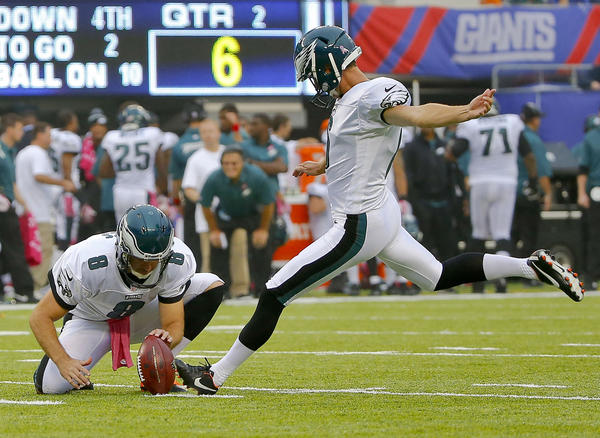
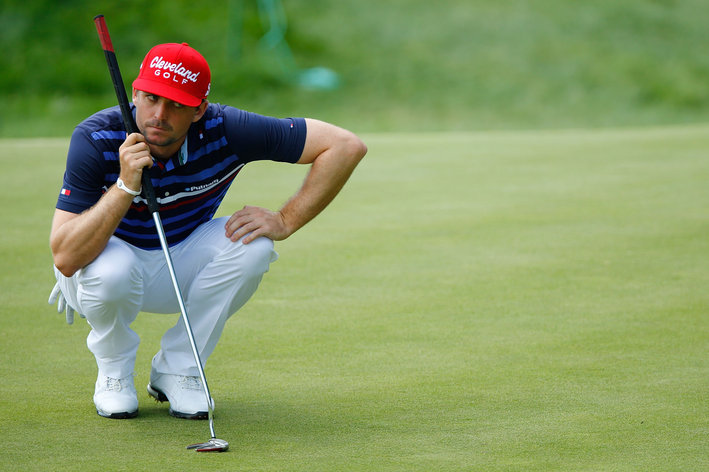
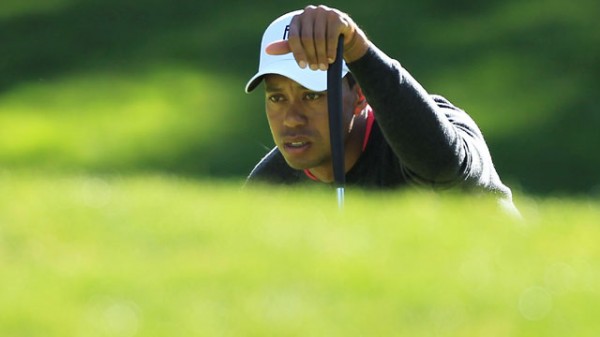

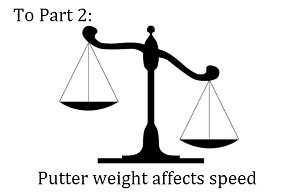

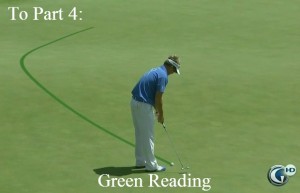























Pingback: Beat the yips with these simple tips | GolfClick.net | Blog
Pingback: Beat The Yips With These Simple Tips : Dan Hansen Golf Instruction
Ed
Jan 9, 2014 at 12:07 pm
Henry, I think it is critical that the player understand that they must be “using” their visualization of the putt during the stroke. Once the player is at address, their total attention should be directed to visualizing the the ball rolling to and stopping at their target. It is only with this visualization active in the brain that the unconscious can then formulate its instructions to the muscles. When the player is successful at doing this they will be unaware of the club swinging or ball contact. To your example, when you write and “A” you are conscious of the mental image and unconscious regarding which muscles and joints are being used and how much grip pressure is needed. All of the physical action is an unconscious reaction to the conscious visualization.
Henry Stetina
Jan 9, 2014 at 12:18 pm
Ed!!! I am glad to hear from you! I will always remember the lesson that you gave me at McCromick Ranch a couple of years ago on how to maintain full awareness/visualization of the target during the stroke. I have thought about that a lot and I believe it is the only way great performers excel in at their task. Artists obviously maintain a mental visualization of what they are painting, drawing, sculpting, etc. Musicians use a mental sound or rhythm that they maintain throughout their performance. It is the way we process information naturally but so much of golf instruction has forced golfers to become more aware of physical movements that many of us have lost track of the underlying objective of sending the ball to the target.
Sam
Jan 6, 2014 at 5:50 pm
That’s awesome I’m gonna read over each part once every 2 weeks great knowledge very helpful
paul
Jan 6, 2014 at 9:10 am
Reading a pre shot routine article still only helps if i am on a practice green and can use it. to bad it is -30 right now.
Henry Stetina
Jan 6, 2014 at 9:18 am
THIS IS A GREAT COMMENT!!! It is actually easier to develop a pre-shot routine at your home because you will be less concerned with the results. Rotella actually suggest practicing it at home. This is a great opportunity for you to develop a solid pre-shot routine so when the snow melts you will be ready to take it to the course.
Henry Stetina
Jan 6, 2014 at 9:59 am
By the way… -30 sounds awful!!! It should get to 68 in Phoenix today.
Adrian
Jan 6, 2014 at 3:49 am
Excellent article….I was really drilling home number 4 just yesterday because I found the more I hesitated when I took my eyes away from the target the more erratic my results became. It doesn’t take long at all for you to lose focus of the target if you don’t execute the shot immediately. Very helpful article.
Henry Stetina
Jan 6, 2014 at 9:12 am
Thanks Adrian. You are spot on. We lose focus of the target very quickly. Dr. Bob Rotella gave this advice to Davis Love III and it really hit home for him too.
DIRK
Jan 6, 2014 at 3:12 am
I was able to write the letter A while visualizing a B.
marty
Jan 6, 2014 at 2:06 am
and you’d also better get used to playing 5+ hour rounds.
this is exactly whats wrong with golf, everyone thinking they are playing for the Open.
Henry Stetina
Jan 6, 2014 at 9:09 am
I completely disagree. From my experience this speeds up play. Slow rounds are caused by golfers’ minds filled with fear and doubt. 4 guys shooting 100 is what takes a long time.
AJ
Jan 6, 2014 at 11:39 am
Agree Henry. I’m not an overly quick player (nor am I slow) but play off a 0-1 handicap and therefore shoot anywhere between 10 and 20 strokes less than most guys at my club.
3 of me vs 3 of them would be about an hour quicker to the ‘me’s’, despite me seemingly taking longer over each shot – I take less shots because of the time I sometimes take.
I agree touring professionals have become far too deliberate though – a 3 ball of scratch golfers at my club (in the UK) would take no more than 3.5 hours to complete 18 holes on an average day. 5+ hours for the pros is ridiculous.
Henry Stetina
Jan 6, 2014 at 3:11 pm
Agreed. A foursome of scratch golfers will probably take the same amount of time and strokes as a threesome of 100 shooters.
You are correct in that touring pros have become a bit slow. But they are also playing for a million dollars every week. Their slow play is definitely a bad example for the weekend golfer.
Golf as a whole is played much quicker in Europe than in America. Surprisingly walking is usually faster than taking a cart.
DaveMac
Jun 30, 2014 at 1:55 pm
Please develop a SHORT pre shot routine, imagine the outcome if the guy who takes 40 putts a round buys into this but does not improve.
A routine is good but make it a fast one. (Jim Furyk likes his so much he does it twice)
amateur
Jan 5, 2014 at 5:19 pm
Ok, I’ll try to do this.